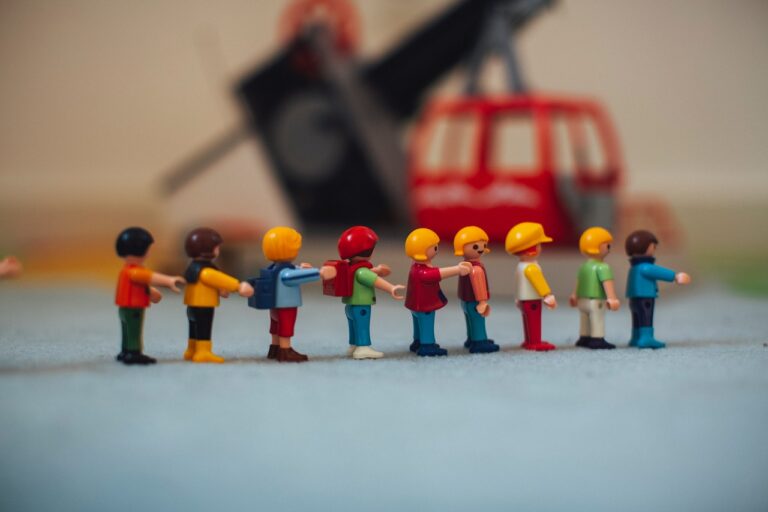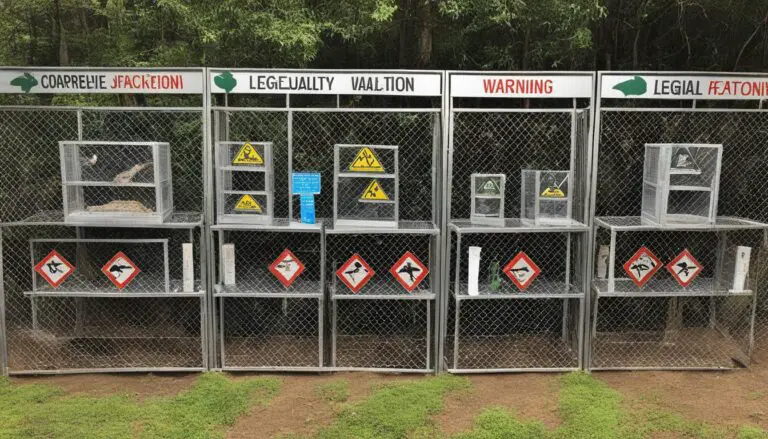Master Exotic Bird Photography Techniques in 10 Simple Steps
Exotic bird photography offers a thrilling opportunity to capture unique species and behaviors. This guide will teach you the fundamental techniques and best practices for getting stunning shots of these colorful birds.
There are over 10,000 exotic bird species in the world. Photographing these rare and beautiful birds takes specific skills and preparation.
- According to Birdlife International, exotic bird populations are declining worldwide. Capturing images helps document endangered species.
- Stunning photos allow people to appreciate and connect with exotic birds they may never see in person.
In this article, you’ll learn:
- Essential exotic bird photography equipment like cameras, lenses, and accessories
- Field techniques for approaching and photographing wild exotic birds
- Recommended camera settings and adjustments for sharp, properly exposed exotic bird portraits and action shots
- Composition principles and creative lighting techniques
- Post-processing workflow for enhanced, professional-quality exotic bird photos
- Ethical practices for respecting exotic birds and their habitats
Follow these 10 simple steps to quickly master exotic bird photography and get magazine-worthy shots of these incredible creatures.
Gear and Equipment
Capturing professional exotic bird photographs requires having the right camera and lens capabilities. Here is the recommended gear setup:
1. Camera Body
Your camera body should have:
- Fast burst mode (8+ fps) to capture sequences of birds in flight. For example, the Canon EOS-1D X Mark III has a burst rate of 16 fps with the optical viewfinder.
- Quick, accurate autofocus to track erratic exotic bird movements. Look for advanced AF systems with many cross-type points like the Nikon D6’s 105-point AF.
- High shutter speed (1/2000s +) to freeze fast exotic bird action. A shutter speed of 1/2500s or faster helps sharpen hummingbird wings.
- Low-noise high ISO for shooting in low light and forests. The Sony a9 II can shoot up to ISO 51,200 with minimal noise.
Top options include:
- Canon EOS-1D X Mark III
- Nikon D6
- Sony a9 II
2. Lenses
Invest in quality super telephoto lenses like:
- 500mm f/4 – Offers great balance of reach, speed, and stabilization for larger exotic birds.
- 600mm f/4 – Ideal focal length for skittish small birds like hummingbirds and bee-eaters.
- 800mm f/5.6 – Provides ultra long reach for capturing exotic birds from afar.
These allow you to shoot from a distance without disturbing birds. Features like image stabilization (VC/VR/IS) help sharpen handheld shots.
3. Other Accessories
- Sturdy tripod like Gitzo Series 3 and gimbal head to support long heavy lenses.
- Flash like Canon 600EX with diffuser for controlling light on forest birds.
- Teleconverters (1.4x, 2x) to boost lens reach up to 800mm or 1200mm.
- Polarizing filter to cut glare and enhance color/contrast in bird plumage.
Finding and Approaching Birds
Locating and getting close to exotic bird species takes knowledge and field techniques.
1. Research Locations
- Learn the native habitats and migratory ranges of target exotic bird species. For example, the Resplendent Quetzal is found in specific high elevation cloud forests in Central America.
- Use guides and online communities like eBird to find hotspots for exotic birds by region. Local birding Facebook groups can provide location tips.
- Plan trips to align with seasonal migrations and breeding seasons when exotic birds will be more visible and active. Go to Peru during rainy season for Amazon species.
2. Field Techniques
- Use a birding scope and binoculars to initially spot and observe exotic birds from afar. Scan for movement and listen for calls.
- Approach slowly and quietly using terrain as cover to get within photographic range. Walk softly and pause behind trees and bushes.
- Avoid direct eye contact which can startle birds. Move slowly and pause often. Wear muted colors to blend in.
- Set up camouflaged blinds/hides or use a vehicle as a shooting platform. Some parks have photo blinds available.
3. Be Patient and Ethical
- Spend time learning exotic bird behaviors and waiting for natural photo opportunities. Sit still and let activity come to you.
- Always put the bird’s well-being first. Never disrupt nesting or cause undue stress. Follow local regulations and guidelines.
- Use long lenses to photograph from a distance and avoid excessive disruption. Be ready when a bird approaches.
Camera Settings and Technique
Optimizing your camera settings and honing your technical skills will help you capture tack-sharp exotic bird images.
1. Recommended Settings
- Aperture: Use f/5.6-f/8 for adequate depth of field to get eyes and beak sharp. Stop down further for more DOF if needed.
- Shutter speed: 1/1000s or faster will freeze motion of fast-moving exotic birds. Increase to 1/2000s+ for hummingbirds.
- ISO: Start at base ISO (100-200) and increase as needed. Shoot at ISO 1600-3200 if light is low. Modern cameras allow clean shots up to ISO 6400.
- Exposure compensation: +1/3 to +2/3 stops for bright plumage. Evaluate histogram.
2. Autofocus Techniques
- Select clusters of cross-type AF points to track moving exotic birds. Customize and test AF point coverage.
- Switch to continuous autofocus mode (AI Servo or AF-C) to maintain focus as distance changes.
- Use back-button autofocus for more control over focusing. Program a custom button if needed.
- Fine tune AF for specific lenses to maximize accuracy.
3. High-Speed Shooting
- Leverage your camera’s high frame rate burst mode (8+ fps) to capture sequences of exotic birds taking off, landing, hunting, etc.
- Use high-speed continuous drive mode and fast memory cards (UHS-II) to sustain burst shooting.
- Practice shot discipline – make every frame count. Target peak action moments. Shoot short bursts.
- Chimp less to increase shooting time. Review images later.
Composition and Lighting
Applying compositional techniques and understanding light will elevate your exotic bird images.
1. Composition Tips
- Frame exotic birds to showcase interesting behaviors and natural poses. Capture them in action rather than just perched.
- Use foreground elements like flowers or foliage to create depth and layers. This adds visual interest.
- Allow space in the frame for the bird to “move” into. Give them room to fly into the frame.
- Compose tight portraits to highlight details like eyes, feathers, beaks. But don’t crop too tightly.
- Capture wide environmental portraits to include habitat and context. Show the bird’s natural surroundings.
- Shoot low perspectives and angles for dramatic bird portraits. Get on eye level with ground birds.
- Use leading lines like branches to draw the viewer into the frame.
- Follow the rule of thirds for composition. Place the bird off center.
2. Backgrounds and Perspective
- Choose clean, uncluttered backgrounds to make the bird pop. Blurred backgrounds work well.
- Use long lenses for compressed perspective and blurred backgrounds. A long telephoto lens compresses the scene.
- Try creative framing like silhouettes against sky, reflections in water. This creates artistic images.
- Pay attention to the angle of the light and how it impacts the background. Side lighting is often most flattering.
3. Natural Light
- Photograph in early morning and late afternoon for best light. Use the golden hours.
- Avoid harsh midday light which creates contrasty shadows. It’s too bright and overhead.
- Cloudy days offer soft, even lighting good for detail. The clouds act as a giant softbox.
- Backlighting rim lights feathers but exposes faces. Use a fill flash to balance it.
Post-Processing Workflow
Proper post-processing brings out the vibrant colors and fine details of your exotic bird images.
1. Import and Select
- Import RAW photos into your editing software (Lightroom, Capture One, etc). RAW retains more data for editing.
- Cull images and select the best exotic bird shots to process based on focus, framing, moment, and composition.
- Rate/flag top images to easily filter and find them later.
2. Adjustments
- Perform key enhancements like cropping, sharpening, noise reduction. Crop to subject, sharpen details.
- Make targeted adjustments to white balance, exposure, contrast, saturation. Boost vibrance.
- Brush on localized adjustments to optimize bird eyes, feathers, beaks. Make eyes pop.
- Use the adjustment brush to selectively edit portions of the image.
3. Creative Editing
- Try black & white conversions or split toning for an artistic look. B&W emphasizes form, shape.
- Use vignetting and textures to draw attention to the bird. Subtly darken edges.
- Carefully enhance vibrance and colors without looking artificial. Don’t oversaturate.
- Use radial and graduated filters for creative effects.
- Sync edits across similar images to batch process for efficiency.
Ethics and Conservation
Photographing exotic birds should be done responsibly to protect the birds and their habitats.
1. Respect the Birds
- Never harass or stress birds to get a photo. Patience and distance are key.
- Follow regulations on approaching nests and young birds. Do not disclose locations.
- Use appropriate camouflage and field techniques to minimize disturbance.
2. Support Conservation Efforts
- Be aware of threatened exotic bird species and follow guidelines in vulnerable areas.
- Volunteer or donate to organizations protecting exotic bird habitats and populations.
- Spread awareness through images and stories to promote conservation.
3. Travel Responsibly
- Ensure your guides and tours follow sustainable practices and give back to local communities.
- When possible, choose eco-friendly lodging and transportation to reduce footprint.
Some key ethical guidelines include:
- Maintain an adequate distance and use long telephoto lenses so birds can behave naturally without being startled or stressed. Avoid approaching nests.
- Never intentionally force birds to fly or move just for a photo opportunity. Be patient and wait for natural behavior.
- Learn to recognize signs of distress in birds like alarm calls or defensive postures, and immediately back away if noticed.
- Follow all regulations and rules in parks/refuges and avoid revealing locations of rare/endangered species.
- Do not use flash extensively as it can temporarily impact vision and ability to forage.
- Never bait birds with food or use audio playback as it can disrupt natural behaviors.
- If photographing captive birds, be transparent in captions about the circumstances.
- Educate others on ethical practices through leading by example and sharing tips respectfully.
The goal should be capturing bird behavior without interfering in their normal activities. Patience and care helps produce rewarding images while ensuring the wellbeing of the birds.
Additional Resources and Inspiration
Here are some recommendations for improving your exotic bird photography skills and finding motivation.
1. Helpful Resources
- Books – The Art of Bird Photography by Arthur Morris offers great tips on camera settings, composition, and more.
- Websites – AllAboutBirds.org provides in-depth species guides and bird ID help for exotic birds.
- Online forums – Talk with other exotic bird photographers on sites like BirdPhotographers.net to exchange techniques.
- Workshops – Hands-on classes with pros like Art Wolfe can rapidly boost your skills through field training.
2. Photographers to Follow
- Tim Laman – Renowned for rare rainforest bird images, especially hummingbirds.
- Melissa Groo – Specializes in stunning close-up exotic bird portraits showing intricate details.
- Tom Schandy – Focuses on iridescent hummingbirds and shares settings/tips.
- Laurie Campbell – Photographs exotic birds worldwide and hosts photo tours.
3. Gain Inspiration
- Look at exotic bird images in magazines like Audubon, BirdWatching, and National Geographic.
- Enter photo contests like Audubon’s annual competition to motivate yourself and get feedback.
- Go on dedicated bird photography tours and workshops to exciting destinations to find new exotic subjects.
- Visit aviaries, sanctuaries, and refuges with exotic bird species.
Conclusion
You now have an overview of techniques and best practices for capturing stunning exotic bird photographs:
- Invest in the right camera and lens gear to achieve fast, accurate focusing and framing.
- Research locations and behaviors to find and ethically approach exotic bird species.
- Optimize camera settings like shutter speed, aperture, and ISO to freeze action and expose properly.
- Apply composition principles and pay attention to lighting for impactful images.
- Follow an effective post-processing workflow to enhance details, color, and vibrance.
- Respect exotic birds and their habitats by practicing responsible field techniques.
- Continue growing your skills and knowledge through online resources and studying top photographers’ work.
With patience and preparation, you can master exotic bird photography. The reward will be a portfolio of dazzling, one-of-a-kind images of these rare, beautiful birds.
Frequently Asked Questions
1. What camera settings should I use for exotic bird photography?
Recommended settings are:
- Aperture: f/5.6-f/8 for adequate depth of field
- Shutter speed: 1/1000s or faster to freeze motion
- ISO: Start low (ISO 100-400) and increase as needed
- Exposure compensation: +1/3 to +2/3 stops for bright plumage
2. How can I get close to exotic birds without disturbing them?
Use camouflage, move slowly, and be patient. Set up hides or blinds near areas of activity. Use long lenses to photograph from a distance. Never disrupt nesting behaviors.
3. What are the best lenses for exotic bird photography?
Look for super telephoto primes like 500mm f/4, 600mm f/4, or 800mm f/5.6. These allow you to capture details from afar.
4. How should I compose exotic bird photographs?
Try framing tight portraits, wide environmental shots, interesting perspectives, and natural behaviors. Follow compositional guidelines like rule of thirds.
5. What post-processing improvements should I make?
Perform key adjustments like cropping, sharpening, noise reduction, and color/contrast enhancements. Carefully boost vibrance without oversaturating.
Peter Stones is the founder of Exotic Pets Place, the leading online resource for exotic pet care information.
With over 10 years of hands-on exotic pet ownership experience, he is deeply passionate about sharing his expertise to help others properly care for their unusual pets.
When he's not writing extensively researched articles or connecting with fellow exotic pet enthusiasts worldwide, you can find Peter at home tending to his own beloved menagerie of exotic animals.







